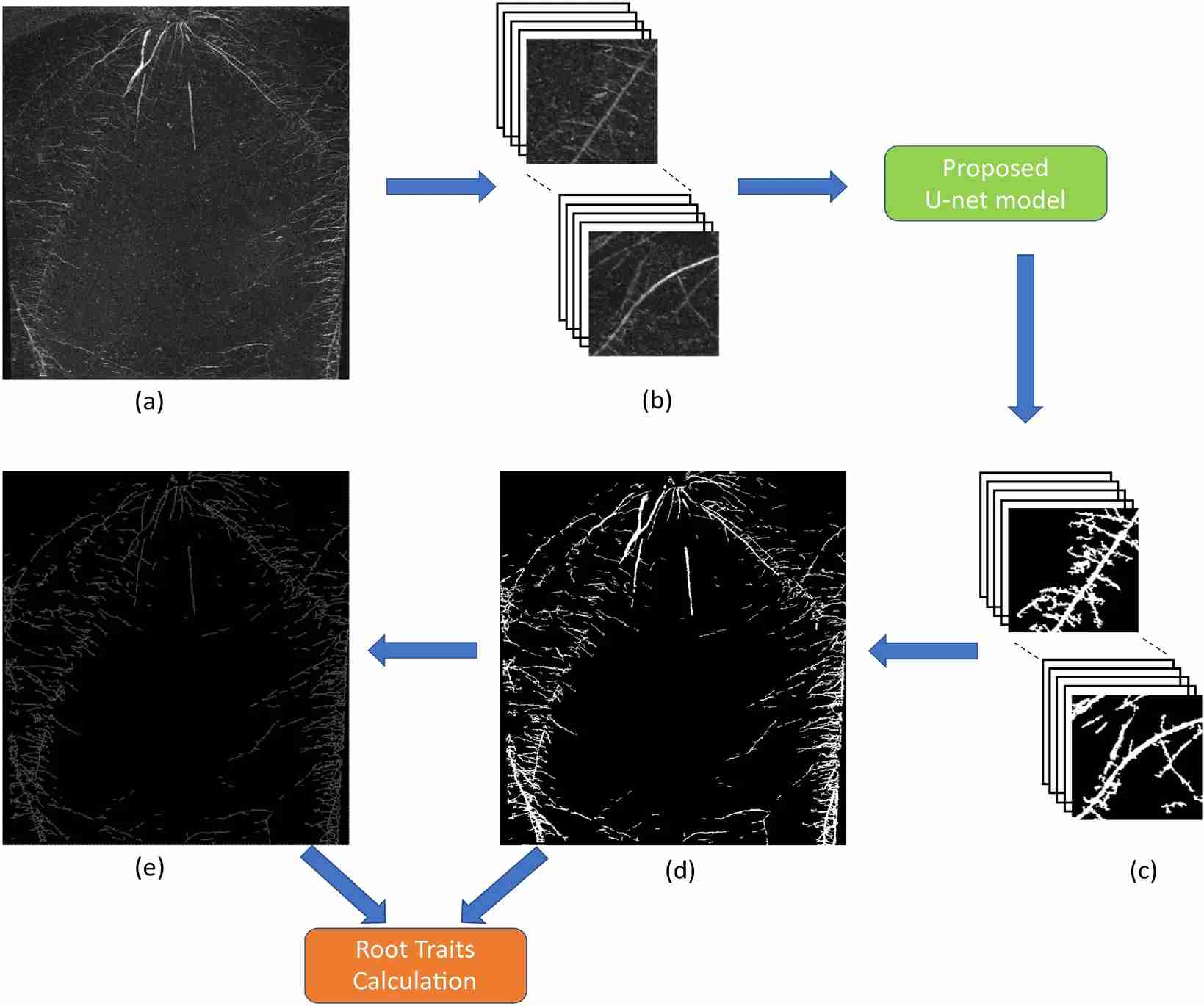The root system is an essential component of plant growth and development, and plays a crucial role in nutrient uptake, water utilization, and stress resistance. Root system morphology and structure are closely related to plant yield, adaptability, and stress resistance. Lifeasible uses fully automated root image analysis to efficiently screen and evaluate many root systems, helping customers select varieties with ideal root characteristics and improve root traits of crops by optimizing the root system structure to adapt to different environmental conditions and to improve the yield and quality of crops.
 Figure 1. Workflow of the pipeline for image processing and segmentation in fully-automated root image analysis. (Narisetti et al., 2021)
Figure 1. Workflow of the pipeline for image processing and segmentation in fully-automated root image analysis. (Narisetti et al., 2021)
Lifeasible's fully automated root image analysis service utilizes advanced computer vision and image processing techniques combined with specialized algorithms and software tools to process, segment, and extract features from plant root images. Our service can quantify various root morphology and structure parameters, such as length, diameter, branching angle, and root density.
Prior to root image analysis, it is often necessary to perform image preprocessing operations, such as denoising, enhancing contrast, and adjusting brightness, to optimize image quality and reduce the impact of noise on subsequent analysis.
Root segmentation is the process of separating the root system from the image. This can be achieved using image processing algorithms such as threshold segmentation, edge detection, region growing, etc.
Extracting meaningful features from the segmented root image is a key step in root image analysis. These features can include the length, diameter, branching angle, and root tip position of the root system. Commonly used feature extraction methods include morphological manipulation, contour analysis, and skeleton extraction.
Based on the results of segmentation and feature extraction, 3D reconstruction of the root system can be performed. This can be achieved by generating a 3D model based on the geometric information of the root system or by using methods such as voxelization.
The final step in root system image analysis is to analyze and visualize the extracted data. This can include statistical analysis, modeling, generating graphs and images, etc.
Fully automated root image analysis can assist plant breeders in screening many plant root systems for morphological characteristics.
By analyzing the growth and morphological changes of the root system under adversity conditions, such as drought, saline, and alkaline stress, plant adaptability and resistance can be determined so that varieties with good adaptability to adversity can be selected for breeding.
The correlation between root morphology and yield of different varieties or populations can be analyzed, which can reveal the contribution of the root system to the formation of yield and provide a basis for selecting high-yielding varieties.
The morphological characteristics and distribution of the root system can be analyzed. Combined with the information on soil nutrient distribution, the nutrient uptake capacity of different varieties or populations can be evaluated, guiding selecting varieties with efficient nutrient utilization.
Lifeasible provides comprehensive root image analysis services, from image processing and segmentation to feature extraction and data analysis; we can provide one-stop solutions to meet the different needs of our clients for root research. If you are interested in our services, please do not hesitate to contact us.
Reference